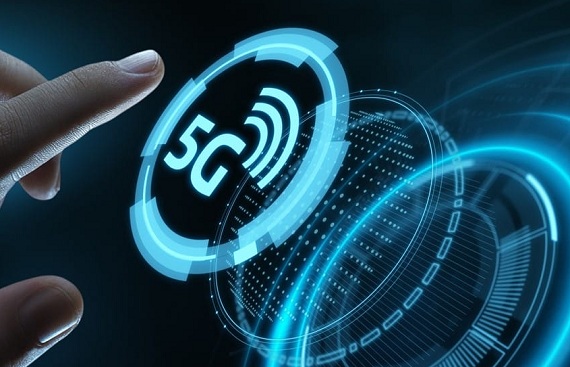How Indian SaaS Will Be Modified By 5G Technology

The launch of 5G technology has anticipated to influence the Indian SaaS market. With its greater bandwidth and faster data transmission rates, 5G technology can give SaaS businesses the infrastructure they need to give their clients better, more effective services. The most significant advantage of 5G technology for the Indian SaaS sector is its increased network capacity. As a result, more devices can connect to the network simultaneously, and data transfer more quickly. It can enable SaaS providers to provide their clients with more dependable and effective services. Everyone is vying for a piece of the 5G pie, from device manufacturers anticipating replacing 20% to 30% of mobile devices over the next couple of years to telecom companies whose next growth phase will drive by the rollout of 5G services.
With the deployment of 5G technology, SaaS providers can provide brand-new services that were not feasible with earlier wireless technology generations. To give users immersive experiences, 5G networks, for instance, can facilitate the deployment of virtual and augmented reality apps. Built-in security features in 5G networks can assist in defending against online threats and guarantee data confidentiality. It can assist SaaS businesses in providing their clients with better security services. The adoption of 5G technology has anticipated to positively affect the Indian SaaS market by enabling enterprises to provide better and more effective services to their clients. However, the availability of supporting infrastructure will be crucial for 5G technology to reach its full potential.
How ‘SaaS featuring 5G’ ?
Integrating 5G technology into Software as a Service (SaaS) solutions can significantly benefit users and businesses. The faster download and upload rates of 5G technology, lower latency, and greater network capacity enhance the user experience and enable SaaS companies to offer more advanced and sophisticated services.
SaaS companies in various industries, such as video conferencing, cloud gaming, virtual and augmented reality, IoT solutions, and edge computing, could leverage 5G technology to provide higher-quality services with lower latency and excellent responsiveness. For instance, 5G technology can enable more natural conversations during video conferencing, give a more seamless gaming experience, and offer a more immersive and responsive virtual and augmented reality experience.
A Quantum Leap For Consumers & Industry 4.0
Cloud and network infrastructure development will receive more attention as more sophisticated apps and solutions. With a particular emphasis on video, AR/VR, and IoT, corporate and consumer industries will enjoy service improvements, innovative delivery designs, and enhanced efficiencies. Investments in these areas have already begun. We are collaborating with several startups to design immersive customer experiences across the consumer technology sector, including gaming, fashion, retail, and healthcare, as well as advancements in industrial automation, manufacturing, and design.
Companies across all sectors are starting to invest in modernizing their offerings and getting ready to provide 5G services as soon as they become available. As costs and delivery quality are balanced, consumers seek convenience, and the market creates on-demand, quickly expandable offerings, SaaS-based products are developing more frequently.
5G & Government
In addition to these solutions, with improved connectivity throughout the nation, we will witness a significant change in how the government delivers healthcare and education services in rural areas and other locations where network connectivity has previously been lacking. Telehealth, diagnostics, and home-based care will all grow due to the government's focus on bringing Fixed Wireless Access (FWA) to rural regions. The vast majority of people in our country will soon be able to order goods from a seller in a nearby town as digital payment networks and initiatives like ONDC continue to emerge. It is true digital inclusion.
Smart Cities and Smart Homes
For IoT devices to function correctly and with low latency, high-quality connectivity is essential, which supports the growth of smart cities. This network, supported by cloud-based services, will serve as the foundation for developing smart cities, a significant project of governments worldwide.
Smart homes and wearable technology will experience unprecedented growth among consumers. Since the devices' communication with the cloud has almost no latency, they won't need local storage.
Role of Telecos
Telcos play a big part in enabling and supplying high speeds. Thus, it's only a matter before they start hosting and selling these services. It will be a tremendously exciting development if multiple SaaS solution providers can target their enormous captive customer base. With the aid of distributed clouds, high bandwidth, low latency, data offload, trusted computing, and safe storage, edge computing will provide devices with the means to calculate locally.
Final Note
5G technology continues to roll out globally, Indian SaaS companies will likely see significant modifications in their operations and offerings. The increased speed, capacity, and connectivity of 5G networks can enhance the capabilities of SaaS solutions in several ways. The adoption of 5G technology is likely to significantly impact the Indian SaaS industry, leading to more advanced, scalable, and efficient solutions that can drive innovation and growth in the sector.
